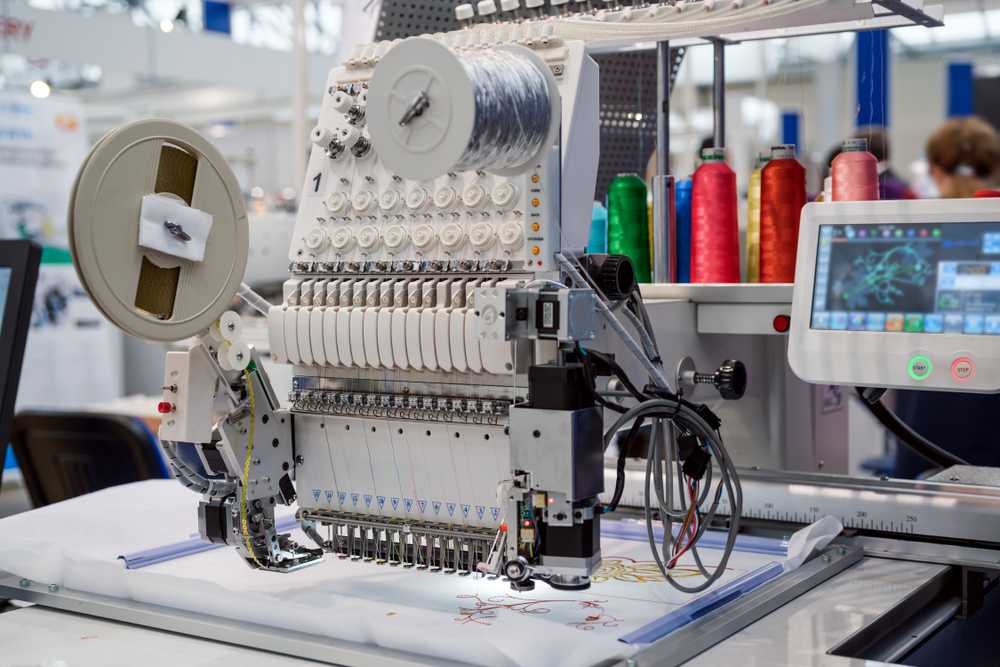Professional Digitizing for Embroidery: Fast and Reliable Service
Wiki Article
Understanding the Embroidery Digitizing Refine: Your Ultimate Overview
Needlework digitizing is a precise craft that calls for precision and experience to equate intricate styles right into digital styles for equipment embroidery. As artisans get started on this journey to understand the needlework digitizing process, a detailed understanding of the essentials sets the foundation for excellence. Beyond the simple expertise exists a world of sophisticated software, specialized devices, and nuanced strategies waiting to be checked out. By delving into the subtleties of digitizing, one can open a globe of imaginative possibilities and raise their embroidery jobs to new elevations.
Comprehending Embroidery Digitizing Fundamentals
Embroidery digitizing fundamentals develop the foundation upon which elaborate styles are equated into machine-readable formats for accurate stitching. This initial action in the embroidery digitizing process is crucial for ensuring that the final stitched item is a loyal depiction of the original style. Comprehending embroidery digitizing basics entails grasping vital principles such as stitch kinds, stitch direction, density, padding, and draw payment.Stitch types play an essential duty in figuring out the visual and textural outcome of the stitched layout. By choosing the proper stitch type, whether it be satin, fill, or running stitch, digitizers can achieve the wanted impact and enhance the total top quality of the embroidery. Additionally, sew direction influences the circulation and measurement of the design, while thickness figures out the spacing and coverage of the stitches.
Furthermore, padding stitching provides security to the style by securing the textile and avoiding distortion throughout the embroidery process. Draw compensation is an additional important factor to consider to neutralize the natural propensity of fabric to agreement when stitched. Understanding these embroidery digitizing essentials is fundamental for developing professional-quality embroidered items.
Picking the Right Digitizing Software Application
Picking the appropriate digitizing software application is an essential decision that substantially influences the efficiency and high quality of the needlework digitizing procedure. Digitizing for Embroidery. When picking the right digitizing software application, it is necessary to take into consideration factors such as the complexity of styles you intend to create, the user-friendliness of the software, the level of client assistance supplied, and the compatibility with your needlework equipmentThere are various digitizing software application choices readily available in the market, ranging from fundamental programs for newbies to innovative software for expert digitizers. Some prominent options consist of Wilcom EmbroideryStudio, Hatch Needlework Software Program, and PulseID. These software use a large array of devices and attributes to aid you develop detailed designs effortlessly.
Before deciding, it is recommended to explore the different software options through free trials or trials to establish which one ideal matches your requirements. Furthermore, checking out reviews and seeking recommendations from useful content skilled digitizers can offer important insights right into the staminas and weaknesses of each software (Digitizing for Embroidery). By carefully reviewing your demands and comparing the attributes of various digitizing software application, you can make an educated choice that boosts your embroidery digitizing workflow
Digitizing Devices and Methods

Optimizing Layout Settings for Needlework
Mastering the intricacies of design settings is fundamental in achieving optimal cause the needlework digitizing procedure, structure upon the structure laid by recognizing digitizing devices and methods. When enhancing style settings for embroidery, it is essential to consider variables such as stitch kind, thickness, rug, pull compensation, and registration. Sew kind choice affects the overall feel and look of the layout, with alternatives like satin, fill, and running stitches using different textures and results. Thickness describes the spacing and thickness of stitches, affecting the layout's insurance coverage and durability. Correct padding stitching provides security and stops material distortion, especially for complex layouts or on elastic materials. Pull compensation adjusts for textile stretch throughout stitching, guaranteeing accurate layout duplication. Registration setups straighten different aspects of the design accurately, maintaining total layout stability. By fine-tuning these design setups, embroiderers can improve the high quality and precision of their stitched developments.
Troubleshooting Common Digitizing Issues
When encountering typical digitizing concerns during the needlework process, it is necessary to understand the source and execute reliable services without delay. One typical problem is stitch thickness issues, where stitches might be as well thick, triggering the textile to pucker, or as well sparse, causing gaps in the style. Adjusting the stitch thickness settings in the digitizing software program can help solve this issue.One more constant difficulty is string breaks throughout the embroidery process. This can occur due to various factors such as inaccurate stress settings, dull needles, or using low-quality string. Guaranteeing correct upkeep of the embroidery maker, consisting of normal needle adjustments and stress modifications, can lessen the event of string breaks.
Furthermore, style enrollment mistakes can cause misaligned components within the needlework layout. Examining the layout placement in the digitizing software program and making essential changes before sewing can aid in preventing this problem. By attending to these typical digitizing problems immediately and successfully, you can make sure a smoother needlework process and premium completed products.
Conclusion
Finally, understanding the needlework digitizing procedure needs a solid understanding of the essentials, the appropriate selection of Your Domain Name software application, and understanding of tools and techniques. Maximizing style settings and troubleshooting usual digitizing problems are important steps in ensuring high-quality needlework results. By following these actions carefully, one can accomplish accuracy and performance in the digitizing process.Report this wiki page